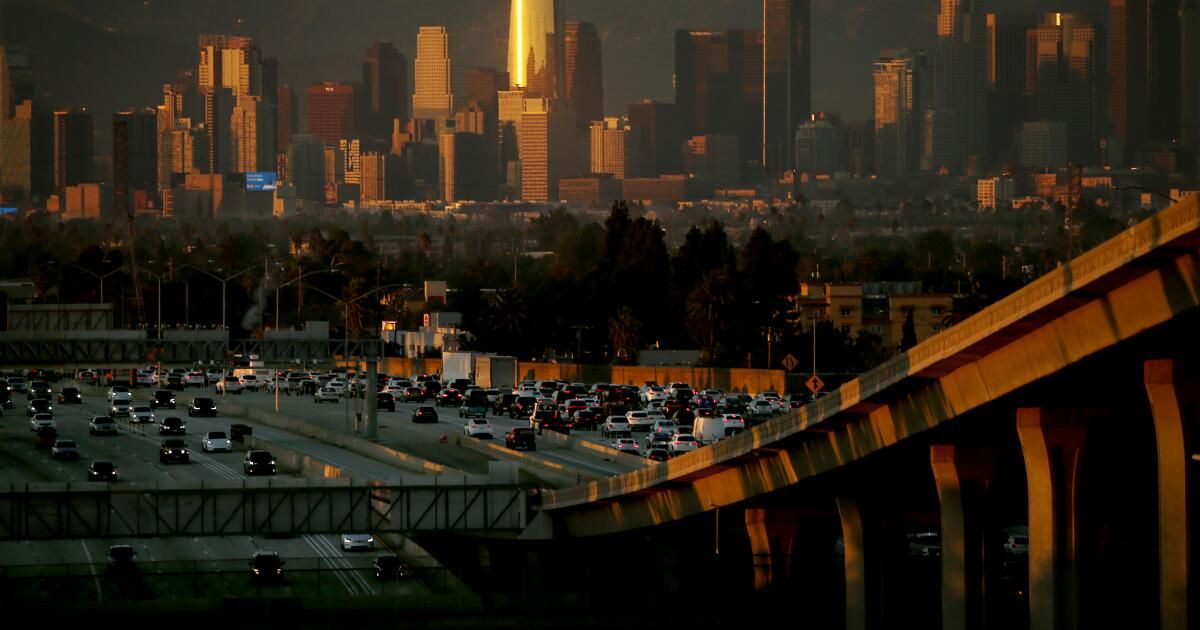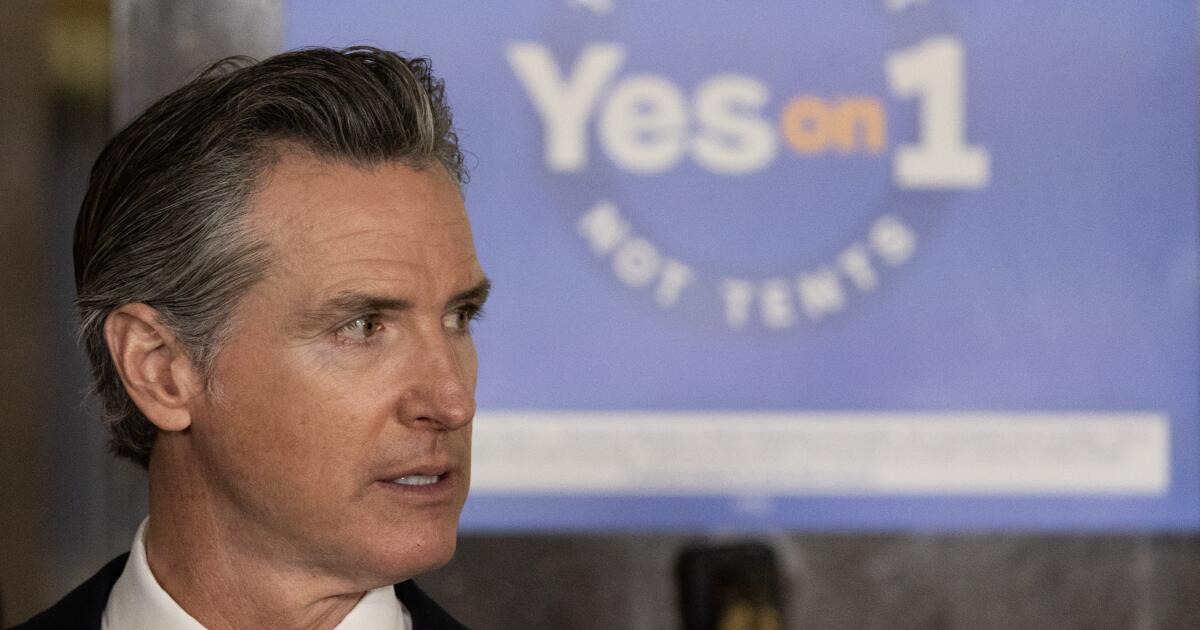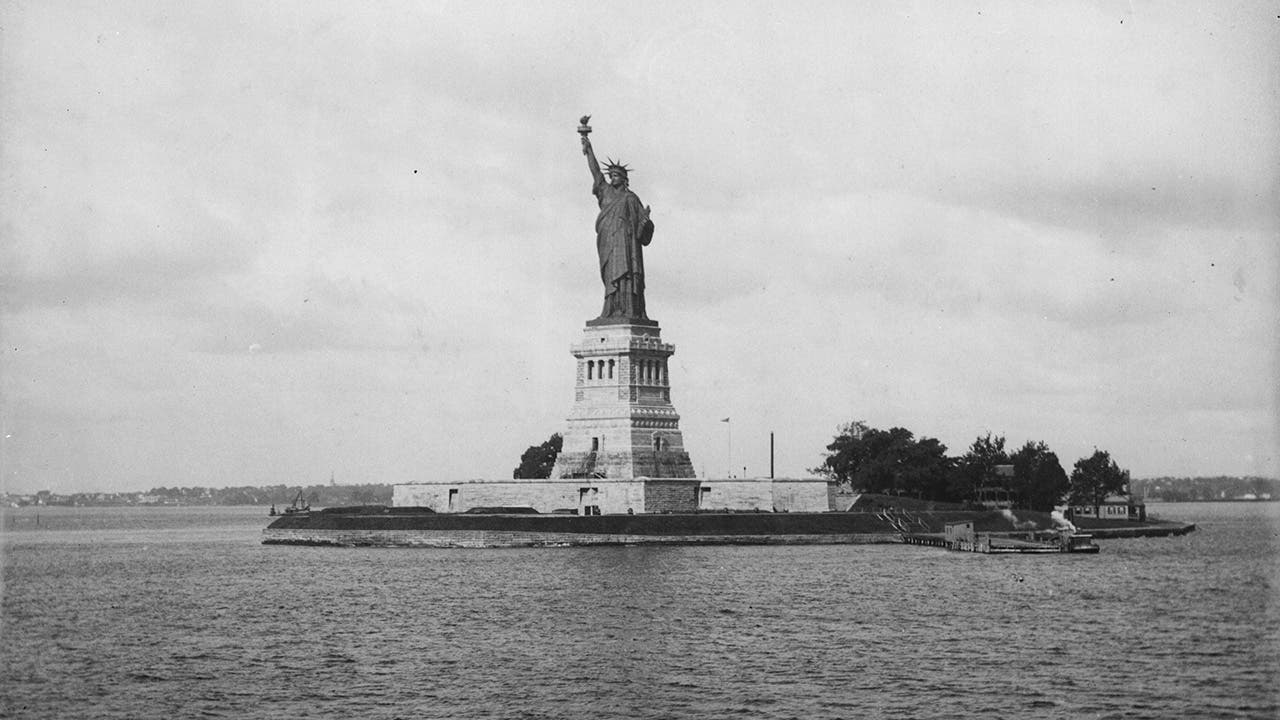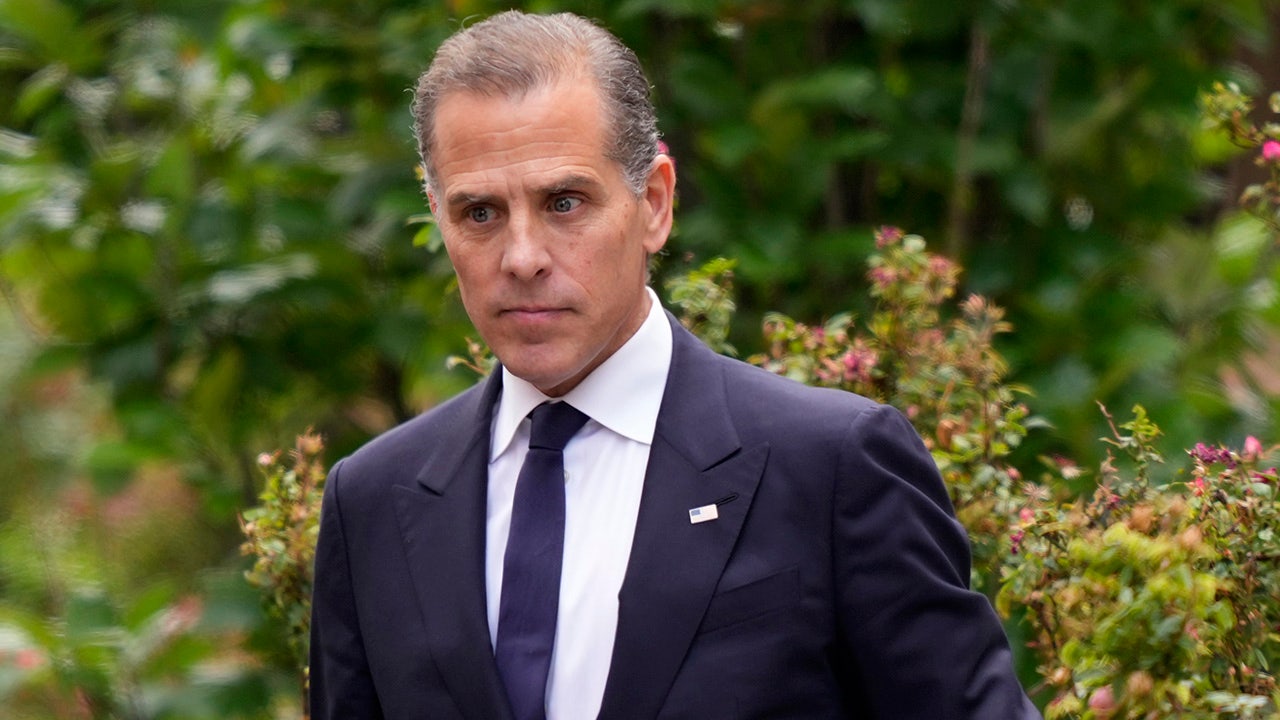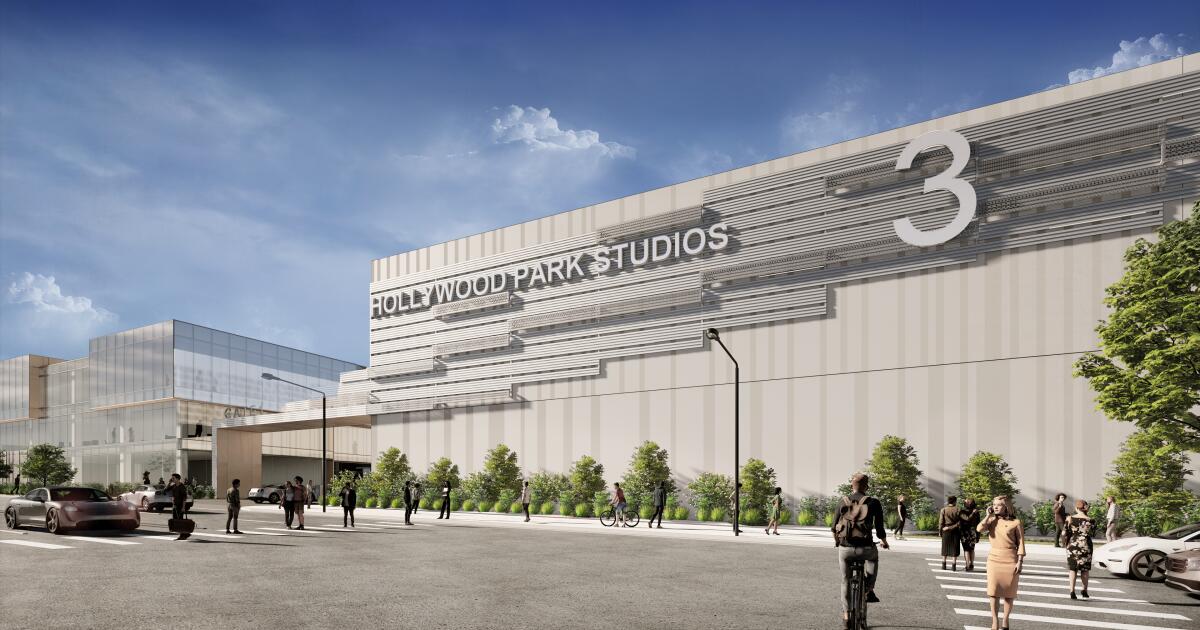The U.S. Environmental Protection Agency is preparing to reject California's plan to curb air pollution in Los Angeles, a consequential move that could result in harsh economic sanctions and federal regulatory oversight of the smoggiest region in the country.
Despite having the strictest air pollution standards in the country, Southern California has never met federal health standards for ozone, the lung-scorching gas commonly called smog. Because of this, state and local air regulators must submit plans to the EPA detailing how they intend to reduce pollution and meet federal standards.
Aggressive and impactful reporting on climate change, the environment, health and science.
California air regulators acknowledge that the region still needs to reduce smog-forming nitrogen oxides by more than 100 tons per day to reach the 1997 standard for ozone.
However, the South Coast Air Quality Management District proposal calls on the federal government to make most of those cuts (at least 67 tons per day) arguing that some of the biggest sources of smog-forming emissions are regulated at the federal level, such as ships, trains and airplanes. Local air quality officials lack the authority to regulate mobile sources of emissions and can only control stationary sources, such as industrial facilities.
In a recent draft response, the EPA proposed rejecting California's plan, stating that “states have no authority” under the Clean Air Act or the Constitution to order the federal government to reduce pollution.
In a direct response, local air officials claimed that the EPA was responsible for the harmful health effects of smog in the Los Angeles area because it had not offered solutions to curb emissions from “sources that we know are outside our control.” control”.
“The US EPA's draft decision is discouraging,” a statement from the air district reads. “South Coast AQMD intends to comment on this new proposal and take all appropriate action in the hope that this decision is not final. “More importantly, the U.S. EPA will have to respond to the millions of residents, especially children, who continue to suffer from asthma, lung diseases, and other illnesses associated with air pollution.”
The EPA has until July 1 to decide whether to end the rejection. If state and local air regulators do not come up with a plan the EPA finds acceptable within that time frame, the federal government could withhold billions of dollars in highway funding, impose strict requirements on new permits, and even impose a federal plan. to stop smog.
The EPA has disapproved the air district's plans several times in the past, but the region has managed to avoid potential penalties.
The proposed denial is the latest showdown between Southern California air regulators and Biden's EPA, two unlikely adversaries who have clashed for nearly two years over how to resolve the region's long-standing smog problems.
It has also highlighted the complex nature of regulating pollution in the region where at least three entities have authority: the local air district, which oversees smokestack emissions; the California Air Resources Board, which governs vehicles within the state; and the EPA, which handles interstate and international travel.
However, some environmental advocates say the dilemma is a collective failure of all levels of government.
Adrián Martínez, lead attorney for Earthjustice, said the dispute follows years of repeated delays and extensions of deadlines, when the three environmental agencies were able to reduce more emissions.
“The plan to meet our clean air standards was based on these faith-based assumptions that we will figure out how to reduce pollution later. And what ended up happening is that we never realized,” Martínez said.
Historically, Southern California has been plagued by smog, which forms when the region's persistent sunlight interacts with vehicle exhaust and smokestack emissions. The region's mountainous terrain confines this toxic haze over the region, rather than allowing it to disperse.
Although there have been significant advances in recent decades through the development of cleaner vehicle engines and pollution controls for industry, the region's smog remains the worst in the country.
Since 1997, nitrogen oxides have decreased by 70% in the air basin. Most of those emissions reductions are the result of stricter vehicle standards imposed by the state and regulations imposed locally on the industry, according to the South Coast Air District.
As emissions reductions have stalled and airplane emissions have increased, the air district has come under increasing pressure to compel the EPA. According to estimates, even if Southern California eliminated emissions from all construction and industrial sources, it would not be enough to meet federal standards.
The air district has sued the EPA for violating the Clean Air Act, arguing that it was impossible for the region to meet federal smog standards without massive cuts from federal sources. The measure was intended to force the EPA to adopt new regulatory strategies that would reduce pollution from ports, railway stations and airports. The air district later settled the case.
For its part, the Biden administration last year adopted stricter standards on emissions from vehicles, including heavy trucks, which is expected to reduce smog.
But these federal requirements still pale in comparison to the rules in California, the only state that can implement its own federally approved vehicle emissions standards.
“We recognize that there are sources of air pollution on the South Coast that the air district and CARB do not have the regulatory authority to control,” an EPA spokesperson said in a statement. “EPA has made it a very high priority to help reduce emissions from mobile sources by developing rules and leveraging unprecedented federal funds… wherever possible.”
The EPA is accepting public comments on its proposed disapproval of the regional smog plan until March 4.
If the EPA finalizes this disapproval, California will have 18 months to obtain the federal agency's approval for a new plan. By missing that deadline, the federal government would require some newly authorized companies to reduce twice as many tons of smog as they emit.
Six months later, if the deadline has not yet been met, the Federal Highway Administration must impose a moratorium on highway funding (with exceptions for public transportation and public safety).
No more than two years after final disapproval, EPA must enforce a federal implementation plan to meet federal smog standards.

